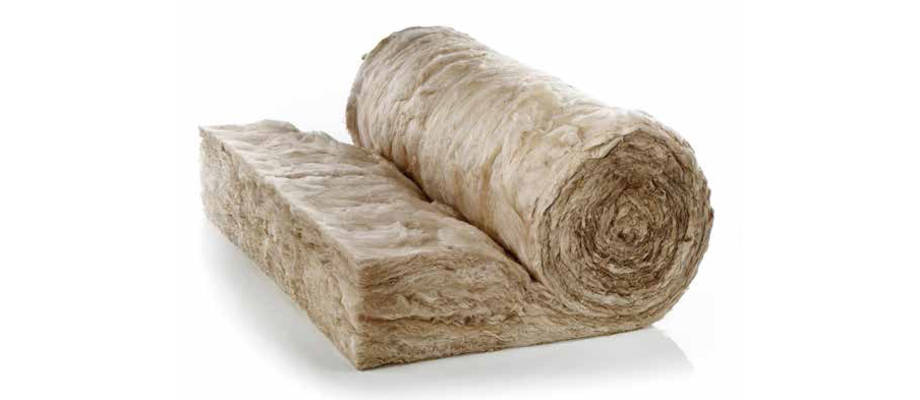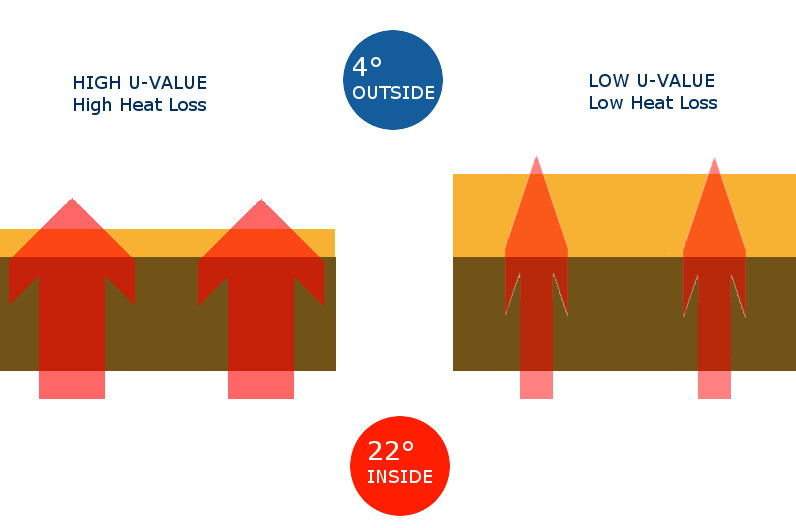Choosing Insulation - What are U-Values?

When you are looking at different types of insulation the highly technical terms used to describe their performance can soon become very confusing. Hopefully this mini guide can help simplify them.
Thermal Conductivity
Thermal conductivity measures how easily heat flows through the insulation. It is often known as the Lambda (and represented by the Greek letter λ). It is important to be aware that this value is independent of the thickness of the material.
Thermal conductivity is measured in Watts per Metre Kelvin (W/mK). The lower this value the better its performance as this means that the heat is lost more slowly across the insulation.
R-Value
The R-Value measures resistance to heat flow through a given thickness of insulation. Therefore, the higher the R-Value is the better it is as insulation.
The following formula gives the R-Value:
R = l / λ
Where l is the insulation thickness and λ is the thermal conductivity. R-Value is measured in metres squared Kelvin per Watt (m2K/W).
The R value is very useful because when calculating the R-Value for several different layers we can just add the R-Value of each layer. For instance:
R(Total) = R(Brick) + R(Insulation) + R(Plasterboard)
And we can easily see what effect there is to the total by changing the type of insulation or the thickness of insulation used. For example: if we add 100mm of PIR insulation with a λ of 0.022Wm/K to a solid brick wall (λ -0.8Wm/K 215mm thick) and a plasterboard lining (λ 0.17 Wm/K, 12.5mm thick).
R(Without) = 0.215 / 0.8 +0.0125 / 0.17 = 0.34m2K/W
R(With) = 0.215 / 0.8 + 0.0125 / 0.17 + 0.1 / 0.022 = 14.28m2K/W
Adding the PIR insulation has improved the thermal resistance by over 14 times. However, the R-Value only measures heat lost by conduction, heat is also lost by convection and radiation. To take these into account we need to use a more sophisticated measurement known as the U-Value.
U-Value
Thermal transmittance, also known as U-value, is the rate of transfer of heat through a structure (which can be a single material or a composite), divided by the difference in temperature across that structure. The units of measurement are W/m²K.
 U-values measure how effective a material is as insulation. The lower the U-value is, the better the material is as heat insulation. For example, here are some typical U-values for building materials:
U-values measure how effective a material is as insulation. The lower the U-value is, the better the material is as heat insulation. For example, here are some typical U-values for building materials:
- a cavity wall has a U-value of 1.6 W/m²
- a solid brick wall has a U-value of 2.0 W/m²
- a double-glazed window has a U-value of 2.8 W/m².
Current building regulation stipulate the following U Values
- Wall - 0.3 W/m2k
- Roof - 0.15 W/m2k
- Windows - 1.6 W/m2k
So we can see that some form of insulation is required.
Calculating the U-Value for insulation can be quite complex but fortunately there a number of U-Value calculators available online. Simply search for them on Google or follow the links on the ABC Depot website.












Comments